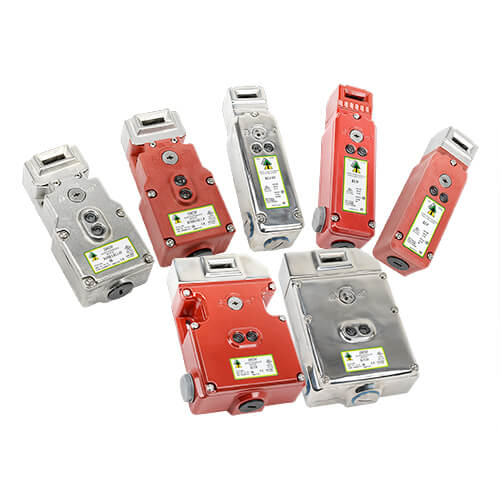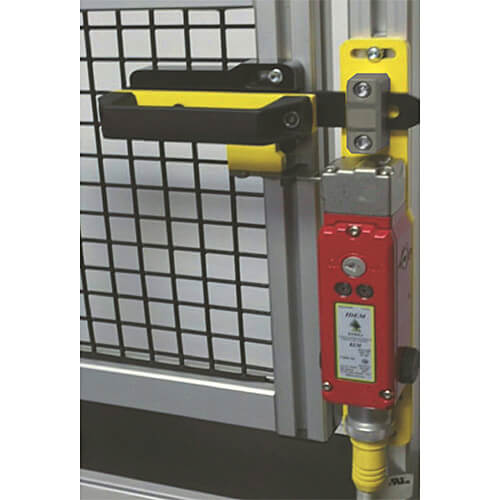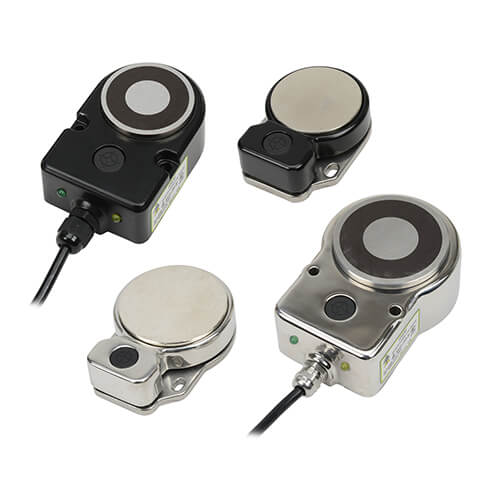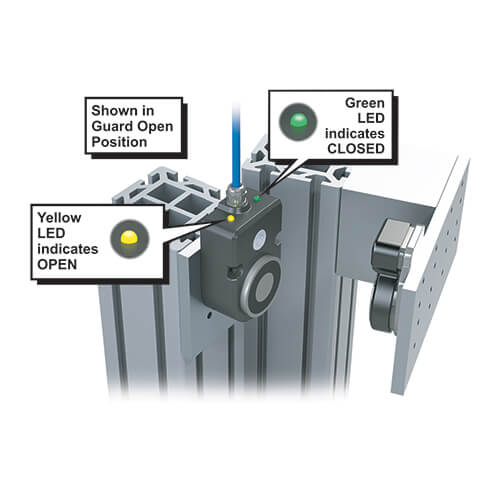Most of us are familiar with safety interlock switches that can disable a safety circuit and notify us if a guard has been removed, the gate is open or something has been tampered with. There are many options to chose from including tongue interlock switches, hinge safety interlock switches and non-contact safety switches. Many of these also offer a level of tamper resistance such as the RFID coded non-contact safety switches and coded magnetic non-contact safety switches.
These are all great options if you just need to monitor and de-energize your machinery if something has been removed, opened, or tampered with but what if you also want to lock a guard in place? What if you want to protect a piece of machinery that is still extremely dangerous when de-energized and made accessible to non-authorized personnel? Think of machinery that has sharp blades, something that could still be very hot when de-energized (welders, heaters, etc.), or something that can cause harm or death inside the guarded area such as chemicals, shears, crushers, etc.
The option here is to use a locking safety interlock switch. This will not only provide your E-stop circuit with a safety interlock device that will switch off the safety relay monitoring the E-stop circuit but will also serve as a lock so that only authorized personnel can have access to a guarded area.

AutomationDirect provides two options for locking safety interlock switches. These options are the solenoid locking tongue safety interlock switch and the non-contact magnetic locking RFID switches.
Solenoid Locking Tongue Safety Interlock Switches
Solenoid locking tongue safety interlock switches are similar to the non-locking tongue interlock switches, but maintain a holding force on the key until the solenoid is energized to release. This type of switch unlocks when energized, so something like a PLC will need to be used to energize the solenoid and unlock the switch.
This type of locking switch has anywhere from 1400 to 2000 Newtons of holding force to make sure doors and gates are not easily forced open or guards are forcefully removed.
Solenoid voltages are available in 24VDC, 110VAC, and 230VAC. Solenoid coils are rated so that they can continuously have voltage applied to them.
In the event of a power loss, the switches will need to be manually unlocked, since they are energized to unlock in operation. This is done with a special tamper-proof manual release key.

Non-Contact Magnetic Locking RFID Safety Switches
Another option available for use as a locking safety interlock switch is a non-contact magnetic locking RFID switch. These switches still monitor whether a gate is open or closed but since the lock is magnetic, do not require physical contact with the actuator. They also have more tolerance to misalignment than a locking tongue safety interlock switch.

The holding force on magnetic locking switches is from 600 to 1500 Newtons. Still, a fairly strong holding force, considering that the components of this switch do not require contact with one another.
Tamper resistance is achieved with an RFID coded actuator that mates up with the switch. There are 2 options for the switch/actuator pair. Master-coded and uniquely-coded. With the master-coded, the actuator can be used with any other master-coded switch of the same model. This still offers some degree of tamper resistance as an unauthorized person won’t be able to simply use a magnet to “fake out” one of these switches. However, if you want this to be more tamper-resistant then uniquely-coded RFID locking safety switches is the option to choose. These require an exact match between the actuator and the switch to work. The drawback to a uniquely-coded RFID switch is that if the actuator is lost or damaged an entire switch pair will need to be replaced.

Locking RFID safety switches are the opposite of solenoid locking safety switches in that they are energized to lock instead of energized to unlock. So, in the event of a power loss, the locking RFID safety switches will become unlocked. Certainly, a consideration that needs to be thought about when designing your safety system around your machinery.
Learn more about AutomationDirect’s locking safety interlock switches or any of the other safety products offered.


